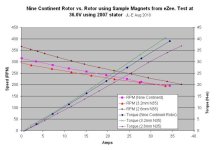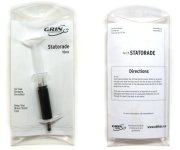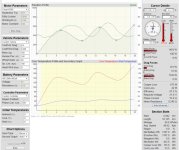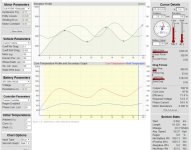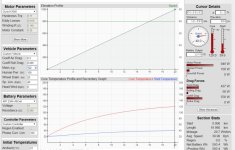I did a rough simulation about the max operating point of N42 magnets with shape like we have in mxus motor. With rough i mean i did not had accurate numbers so i assumed a width of 13mm and thickness of 2,5mm. the 45mm length was clear but this has no influence.
the result: already at less than 60°C they will get partial damage.
if i interpreted the graphs right than at 80°C the strength would drop to about 50-60% of what it would have original
N42SH would hold its strength up to 115°C
this is one single magnet in free air WITHOUT the influence of the back iron, but what effect does it have?
EDIT:
flathill, when the magnets are attached to the back iron, they will have a max temperature operating point of one single magnet in free air with twice the thickness (assumed there is 100% steel return, with the rectangular magnets it will be lower). i am right with this?
a calculation with twice the thickness gives me a max op point of about 70-75°C
the result: already at less than 60°C they will get partial damage.
if i interpreted the graphs right than at 80°C the strength would drop to about 50-60% of what it would have original
N42SH would hold its strength up to 115°C
this is one single magnet in free air WITHOUT the influence of the back iron, but what effect does it have?
EDIT:
flathill, when the magnets are attached to the back iron, they will have a max temperature operating point of one single magnet in free air with twice the thickness (assumed there is 100% steel return, with the rectangular magnets it will be lower). i am right with this?
a calculation with twice the thickness gives me a max op point of about 70-75°C


